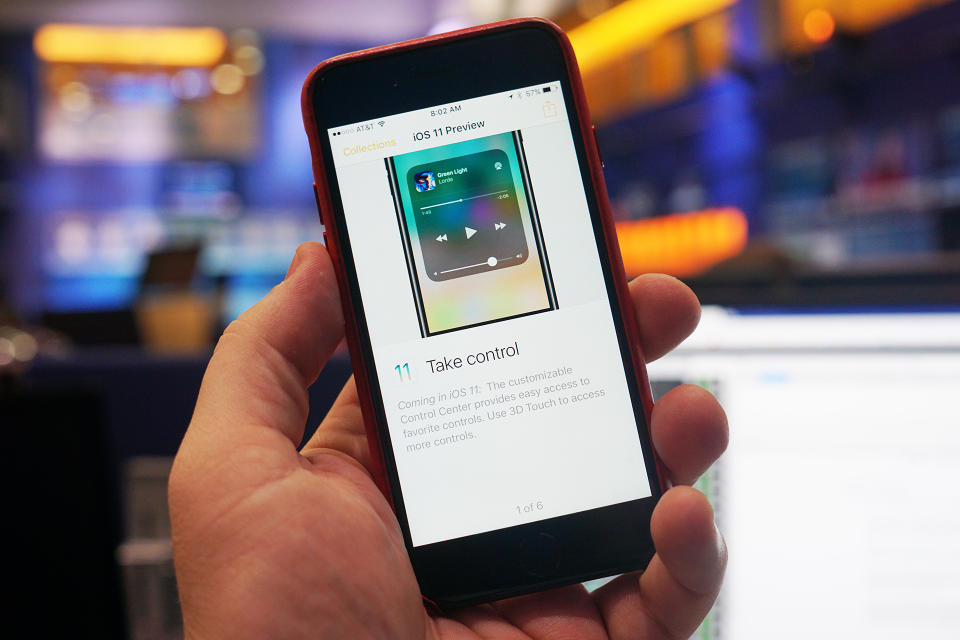How Apple can prevent the iPhone from going the way of the PC
And ahead of the iPhone 8 launch this Tuesday, September 12, that word looms large for Apple (AAPL), as it could pose perhaps the biggest risk to the company long-term.
After all, if the company can’t continue to offer enough value-add features that inspire consumers to pay up for new models in the US or pay up in development markets, the iPhone is at risk of going the way of the PC: down.
This comes into focus ahead of the new phone launch, with a rumored price tag of over $1,000. Apple is betting on consumers seeing enough value in the new phone to pay up this time around … and the pressure is on for the innovation to continue.
The lesson of PC commoditization: A road Apple doesn’t want to take
Over the last three decades, the PC has transformed from prized technological development to a regular part of our everyday lives. And for a long time, flashy brands like Gateway and Packard Bell were among names like IBM and Dell that were all marketing the unique things they offered. But it didn’t take long for all these PC brands to become a commodity with minimal differentiation between brands and with price to become the core decision point for consumers.

Commoditization is often seen as the kiss of death for a company, product or industry—as it threatens to push down pricing and eventually profitability.
In fact, 2016 marked the the fifth consecutive year of worldwide PC shipment decline, according to Gartner.
“The broad PC market has been static as technology improvements have not been sufficient to drive real market growth,” according Mikako Kitagawa, principal analyst at Gartner. “[T]he market driven by PC enthusiasts is not big enough to drive overall market growth.”
Meanwhile, prices for computers and peripheral products (like computer storage devices and keyboards) have fallen dramatically. From December 1997 to August 2015, the Consumer Price Index for personal computers and peripheral equipment declined 96%, according to the Bureau of Labor Statistics.
And the actions by the original major PC makers—IBM, Hewlett Packard and Dell—reflect the difficulty of the industry commoditization as they turned to focus on higher-growth areas. First in 2004, IBM (IBM) made the decision to sell its PC business to Lenovo, looking to focus on services. Then in 2014, HP announced it would split the company into a PC business, now HP Inc. (HPQ), and its faster-growth enterprise computing, storage and networking business, now Hewlett Packard Enterprises (HPE). And in 2013, Dell was taken private, largely because of a struggling PC business. Soon after, in 2015, the company announced it would acquire data-storage provider EMC in the largest tech deal ever, an affirmation of its efforts to diversify away from the slowing PC business.
Ultimately, the fate of the PC—a slowdown in demand and a falloff in prices—reflects the prediction put out by Intel (INTC) co-founder Gordon Moore in 1965. Moore’s Law, which says that computing power doubles every two years, reflects that with advancements come lower costs.
Apple’s high order
With its newest iPhone, Apple is looking to wow consumers to trade up, justifying the reportedly high price tag.
After all, while Apple has only an 18% market share of smartphones worldwide, it has managed to capture over 90% of profits by offering differentiated value, according to Needham’s Laura Martin.
“Apple has a monopoly on the richest 18% globally,” Martin said. “And while this price point excludes huge swaths of the global population, it is monetizing its base better than competitors.”
The iPhone 8 will reportedly do away with the physical home button, replacing it with an OLED display that covers almost the entire front of the phone, according to predictions by analysts. Expectations also call for improved battery technology and augmented reality features. Analysts also have expectations long-term for Apple to offer more health-related offerings, extending to the watch.
These features, plus an older installed base of users ready for an upgrade (approximately half of the 660 million installed base are over two years old), will compel many users to get the new iphone, according to Piper Jaffray’s Mike Olson.
And the commoditization pressure already underway internationally reinforces the importance of Apple’s premium strategy, according to Martin.
In China, domestic competitors are pushing out cheaper smartphones with the same functionality. This challenge is also underway in India, where Apple’s market share hovers around 2%. Rival smartphone makers have undercut Apple’s already reduced prices in the region.
Martin said Apple should leave that game behind, focusing on continuing to add value to the population base that wants to pay up, including embracing their unique ecosystem, which can eventually extend to the home.
“Our research demonstrates that ecosystem economics lower churn and raise the lifetime value of each customer,” she wrote, adding that this strategy protects the company from the race to the bottom for Android device makers. “We believe that consumers perceive Apple products to be a tightly integrated ecosystem of content and hardware, which lowers churn and raises revenue per user.”
The real question is: How long can significant innovation last? And will Apple be susceptible to the fate of the PC industry: More advancements leading to commoditization?
Please also see:
DACA repeal will conservatively hit GDP by $105 billion over five years, Mark Zandi says
Why $475,000 isn’t actually that expensive for Novartis’ new drug
Gilead may have just bought itself a drug pricing controversy
The shift from brick-and-mortar to online may be a hopeless strategy
Digital ads aren’t working for big consumer brands

